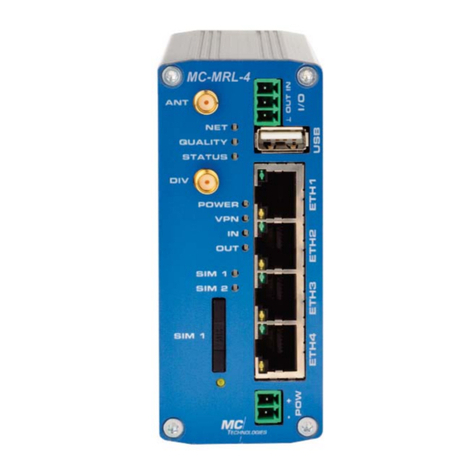
4MC Technolo
ies GmbH
1. Configuration via the integrated web interface
1.1 Preparations
1. Hook the router up to the power supply using connection P1 or P2.
2. To configure, connect the PC and the router to Ethernet port ETH1 or ETH2 using an Ethernet cable.
3. For configuration, you will need a browser (i.e. Mozilla Firefox, Microsoft Internet Explorer, etc.) on a PC
The router must be connected to the power supply. The PC to be used for configuration must be connected to an
Ethernet port on the router.
1.2 Configuration
1.2.1 Configuration via web interface
1. The PC must be set to "obtain IP address automatically." This setting is
the normal setting of a PC.
2. Open a browser on the PC.
3. Type the IP address (default: 192.168.0.1) in the address field.
4. A username and password must be entered for authentication. In the basic settings, the username "admin" and
password "admin" have been preset. Enter these into the corresponding fields. For your protection, this
password can be reset at anytime in the web interface at the following point in the menu: System/User (see
page 35.)
1.2.2 Local IP address is not known (or no longer known) - configuration button
To configure the router via the standard IP address again you will need the configuration key on the backside of the
device. This function does not reset the configuration. It just allows you temporary access to the integrated web
server with the standard access data, as described under
point 1.2.1.
1. Unplug the router from the power supply.
2. Use a pointy object to hold down the configuration button.
3. Plug the power supply back in.
4. Keep the configuration button pressed down until the LEDs on the router blink LED-
Test.)
You now have web management access with the standard access data. Please, check IP address parameters,
username and password for the router, and make any changes necessary.
1.2.3 Resetting all parameters
To reset all the parameters of the router to factory default settings, use the internal web interface. In the menu,
under System/Configuration Up-/Download, please click the Apply button for the "Reset to Factory Defaults"
function.




























